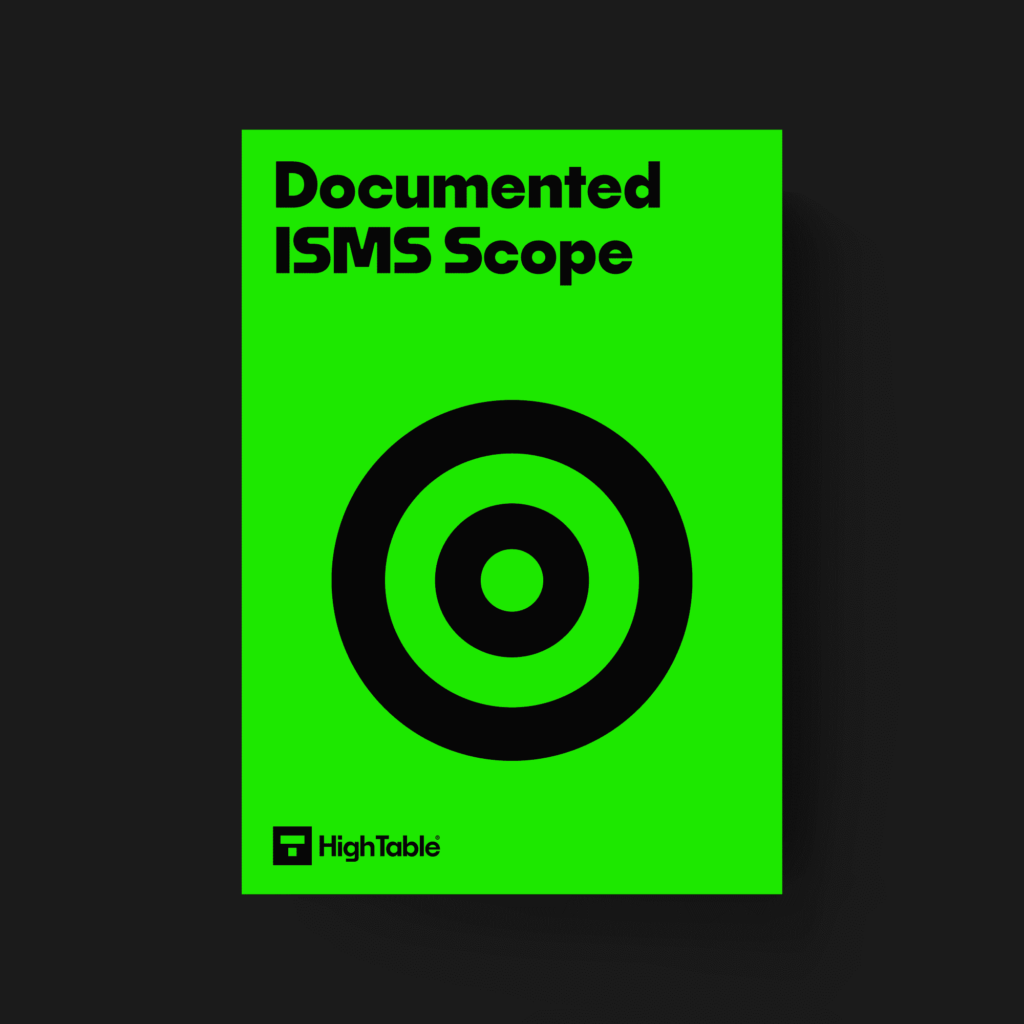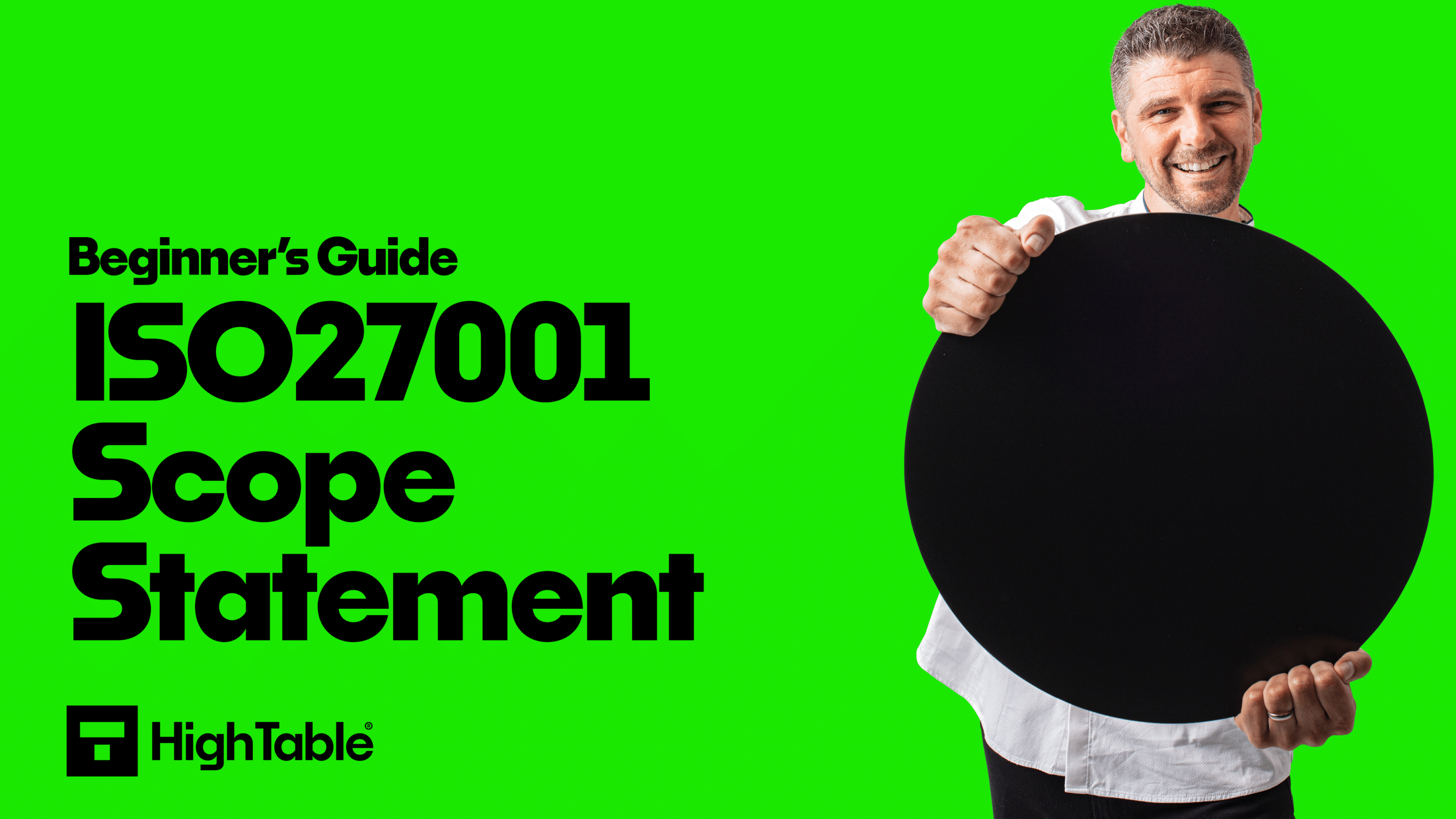Introduction
You want to lean how to define ISO 27001 Scope? You are unsure about how to go about it, where to start, what to include and how to write it?
In this article I am going to show you how to quickly and simply write, define and implement ISO 27001 Scope.
I am Stuart Barker the ISO 27001 Ninja and this is how to define ISO 27001 Scope.
Table of contents
What is ISO 27001 Scope?
ISO 27001 scope is the scope of the information security management system.
We are going to build an information security management system with the information security policies and apply it to something to get ISO 27001 certified.
The ‘something’ that we are going to apply it to is the scope.
We document the scope in an ISO 27001 Scope Statement.
ISO 27001 Scope Examples
When considering the what of ISO 27001 scope we can look at examples where we might want to apply the standard and gain ISO 27001 certification.
Common examples include
- A product
- A service
- A location
- A geography
- A team
- A department
What is an ISO 27001 Scope Statement
The ISO 27001 Scope statement is the statement that will appear on your ISO 27001 certificate.
The ISO 27001 certificate is the public document that you share with customers and potential customers.
They will use this information to assess if the ISO 27001 certificate covers what they are buying from you and therefore if they can place reliance on it for their needs.
The scope statement shows which parts of your business are certified and it shows them that you are doing the right thing for information security.
If the ISO 27001 scope statement does not cover the products or services that they are buying from you then they cannot place reliance on it and it will not be valid for them.
Consider an extreme example where your ISO 27001 scope statement covers the company stationary cupboard (I know, I know, it is an example) and the customer is buying an online SAAS Platform from you. Does the fact that you have ISO 27001 certification for your stationary cupboard give them assurances that the online SAAS Platform is secure and managed to the standard of ISO 27001?
If you are struggling with this one, let me help you, the answer is no.
How to define ISO 27001 Scope
The scope for ISO 27001 is going to be based on two things:
- the products and services you offer
- which of those products and services your customers expect to be certified
Decide on the products or services
The first step is to look at the products and services that we have and then we look at what it is that our customers are asking of us.
- Customer Feedback: We start by reviewing the products and services we offer, then see what questions our customers have. This helps us identify that scope that is most relevant to their needs.
- Contract Review: Existing customer contracts can reveal specific certification scope required to do business with them.
- Sales Team Insights: Talking to your sales team provides valuable feedback on what certification scope customers are asking about.
Since resources (time, money, and personnel) are limited, it’s crucial to focus certification efforts. The chosen scope might involve extensive paperwork, so including only what’s truly necessary minimises workload and cost.
Write your scope statement
After finalising what products and services your ISMS will cover (your scope), it’s time to write a concise statement summarising that scope. This statement serves as a high-level overview.
We’ve included several ISO 27001 Scope Statement examples later in this article to help you get started. Feel free to use them as inspiration for your own!
Document Your Scope
Clearly define your ISO 27001 scope for better management. When outlining your scope, be specific . Include both what’s included (in scope) and excluded (out of scope) in a dedicated Scope Document. This document goes beyond the brief scope statement and serves as a valuable internal resource.
To further clarify your scope boundaries, consider including details on:
- Systems in use
- People involved
- Locations covered
- Departments encompassed
A comprehensive Scope Document with visuals like architecture diagrams, technical documents, and network maps will greatly enhance clarity.
Implementation Summary
Time needed: 1 hour
How to define ISO 27001 Scope
- List your products and services
Create list of all of your products and services. Use the names that your customers use and know them by.
- Choose the products and services that need ISO 27001 certification
From the list of all of your products and services choose the ones that customers are asking you about and / or the ones that you want to have and ISO 27001 certificate for.
- Identify the people, technology and premises that make up the chosen products and services.
List out the departments in the company, the technologies and the locations that make up the products and / or services that you want to have and ISO 27001 certification.
- Write a clear ISO 27001 scope statement
Write a clear statement that states the products and / or services and then clearly sets out the people, technology and locations that are in scope for the ISO 27001 certification.
ISO 27001 Scope Statement Examples
ISO 27001 Scope Statement Example 1: High Table Scope Statement
The following is taken directly from our very own ISO 27001 scope statement:
Information security consultancy and virtual chief information security officer services in accordance with the statement of applicability version 2
High Table ISO 27001 Scope Statement
ISO 27001 Scope Statement Example 2: General Scope Statement
The scope encompasses all employees, locations, technology, data assets and business processes that deliver [List the products and services in scope] in accordance with the statement of applicability version [version number].
General ISO 27001 Scope Statement
A great ISO 27001 scope example is provided in the ISO 27001 Scope Document template and can be readily reused and adapted for your needs.
ISO 27001 Scope Statement Template
Doing so many ISO 27001 certifications over the years led to the creation of the ISO 27001 Scope Document Template that people can use as part of their own ISO 27001 certification.

DO IT YOURSELF ISO 27001
All the templates, tools, support and knowledge you need to do it yourself.
ISO 27001 Scope Statement Tutorial
In these short video tutorials I show you how to use implement scope to meet the needs of the standard and also how to use the ISO 27001 Scope Statement.
FAQ
Scope forms part of the overall ISO 27001 Clause 4 context of organisation and you can read the reference guide: ISO 27001 Clause 4.3 Determining The Scope Of The Information Security Management System
The purpose is to make sure that you have considered and defined the scope of your information security management system in line with the requirements of the standard. I add on the caveat – and the requirements of your customers and clients.
The work will be the responsibility of the it manager and the information security manager and accountability will be with Senior Management and Leadership.
To document ISO 27001 scope there are layers of documentation.
1. The high-level scope statement
2. HR organisation charts
3. Architectural diagram
4. Server diagrams
5. Network diagrams
6. Location diagrams
The organisation shall determine the boundaries and applicability of the information security management system to establish its scope.
When determining this scope, the organisation shall consider:
a) the external and internal issues referred to in ISO 27001 Clause 4.1 Understanding The Organisation And Its Context
b) the requirements referred to in ISO 27001 Clause 4.2 Understanding The Needs And Expectations Of Interested Parties
c) interfaces and dependencies between activities performed by the organisation, and those that are performed by other organisations.
The actual scope of ISO 27001 as a standard covers information security. It defines information security as the confidentiality, integrity and availability of data. The right people, with the right access, to the right data at the right time. As a standard ISO 27001 is actually a little tricker than that and bats above it’s pay grade in a number of areas.
Specifically it likes to include catch all statements like complying with all relevant laws. A great catch all and as such it opens up the audit to review all laws that are relevant and seek assurance you are meeting them. In practical terms, most certification auditors are only really comfortable with data protection laws such as those related to GDPR. They will go out of their way to make sure you fully meet the GDPR thus, in effective, expanding the scope of what is in reality a very simple standard.


